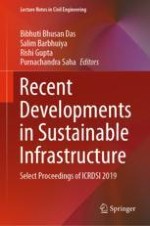2021 | OriginalPaper | Buchkapitel
Review on Study of Soil Stabilization by Application of Microorganisms
verfasst von : Sourya Snigdha Mohapatra, P. K. Pradhan
Erschienen in: Recent Developments in Sustainable Infrastructure
Verlag: Springer Singapore
Aktivieren Sie unsere intelligente Suche, um passende Fachinhalte oder Patente zu finden.
Wählen Sie Textabschnitte aus um mit Künstlicher Intelligenz passenden Patente zu finden. powered by
Markieren Sie Textabschnitte, um KI-gestützt weitere passende Inhalte zu finden. powered by
